Archive for the ‘LeRoy Gorman’ Category
Entry 1533 — Autobiographical Square Root
Saturday, August 9th, 2014
I seem to be recovering nicely from my accident although the bruise on my thigh remain disquieteningly black and blue (but seemingly not infected): I played tennis this morning for an hour. Didn’t move all that well, but this morning wasn’t sure I’d be able to run at all, or use my left arm to make much of a toss for my serve (my shoulder has a lot of little strains and pains). I actually was almost my self coming in for balls, but no good laterally. My toss was adequate.
In spite of my physical improvement, I still feel too blah to do much Important Work, and even my sorry blog entries are a strain. Hence the following, the cover of LeRoy Gorman’s recent little collection of splendid math poems, including the one of its cover:
.
Entry 1510 — A Working Blog Again
Thursday, July 17th, 2014
Entry 1508 — “to die in one’s sleep”
Tuesday, July 15th, 2014
I finally came back to my blog and found I can’t post graphics anymore. I suspect I have used up just about all my storage space. I wanted to post one of the 19 terrific math poems in LeRoy Gorman’s aftermaths, a copy of which I just got in the mail from him. Its title is “to die in one’s sleep.” What’s below is my attempt to show it as accurately as I’m able to at this site–in other words, not too accurately:
z
Z
Well, on the version of my entry I have here before posting it to the Internet, I have LeRoy’s poem as a big Z in the center of my screen and a little z above it to the right. But when I’ve posted it and gone to the Internet to check what’s there, all that’s there is a little z way off to the right. Meanwhile, I asked mIEKAL aND, whose site this blog is part of (as I feebly understand it), what he thought was going on. He checked, and was able to post graphics here. I’m allowed as much space as I need, he told me. I tried a different browser with the same result. Evidentally, my computer has some kind of virus that keeps me from using html or posting graphics. So I guess I’ll just make it a text-only blog–until I can’t do that anymore.
As I hope will be obvious, it’s supposed to be a z with an exponent of z. Very funny at the comic-strip level . . . but deep, in my view, at the haiku-level. The poem is best with a properly-placed exponent, but the version above has me wondering how to make a poem based on a distant exponent, as above–or a displaced exponent of any kind. . . .
A main reason I’ve been away is that my legs and a few other parts of me haven’t been right. I guess the oest way to describe it is that I feel like I have some kind of five- or six-inch-wide band around each of my legs just above the ankle that’s a bit too tight. My feet feel sort of swollen, but aren’t. They feel heavy. My heart seems not to be the cause, nor my brain, according to the cat-scan I got when I finally went in to a hospital. The only thing not normal in the tests I got, including several blood-tests, was an abnormal reading of my urine specimen. So I had to take Cipro, an anti-biotic with numerous side-effects, half of which I thought I suffered, for a possible urinary tract infection.
I took the Cipro for a week, and there was no real change in my symptoms, so today I saw my GP. He scheduled me for an MRI of my back (which has been feeling fine) and a sonar scan (or whatever) of my feet for next week. My doctor felt the pulse around my ankles and said it was “not robust.” So it looks to be circulatory. I feel better about it–apparently it’s nothing I have to be rushed to the hospital about.
I still think it may be some kind of nervous breakdown. Which wouldn’t embarrass me: you run too many miles and your knees give out; you chase ideas too long and your nerves and/or glands give out. What’s the difference? Meanwhile, I’ve done less writing these past two weeks than I usually do even when in and out of the null zone, but I got some work done. As for this blog, what I hope to do is back-up this entire blog to an external hard drive, if I can find a way to do it that won’t take a hundred hours, then delete everything here except the last six months, say. I hope to have another entry tomorrow, but can’t guarantee it. I feel okay right now, though.
.
Entry 541 — Haiku Canada Review, Oct. Issue
Sunday, October 23rd, 2011
I just got the latest issue of Haiku Canda Review, long edited by my friend LeRoy Gorman. The first poem in it that caught my eye was this, by Roland Packer:
And here’s a nice variation (it strikes me) on Yeats’s description of “imaginary gardens with real frogs in them” (and quoted by Marianne Moore):
bottomless, the well
of dreams–a chickadee
on the sill
It’s by George Swede. Discussion tomorrow of both, and–perhaps–others.
.




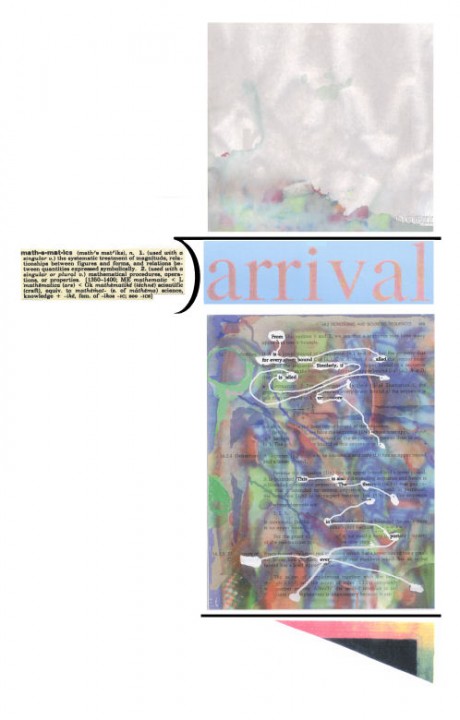
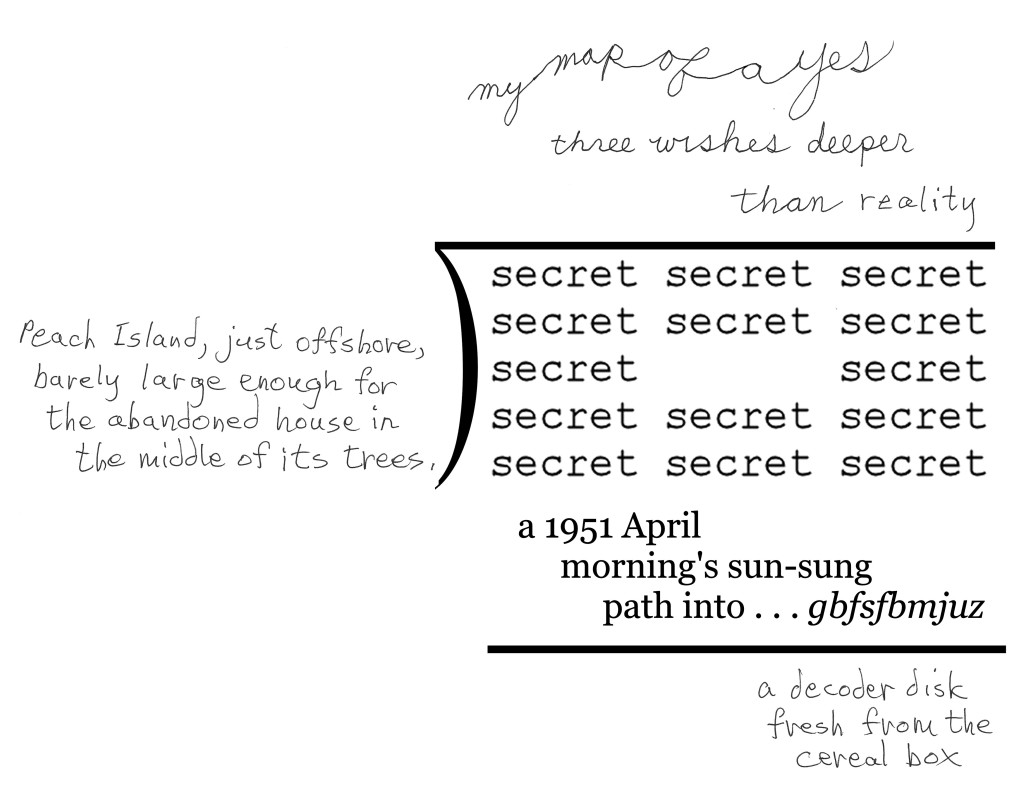
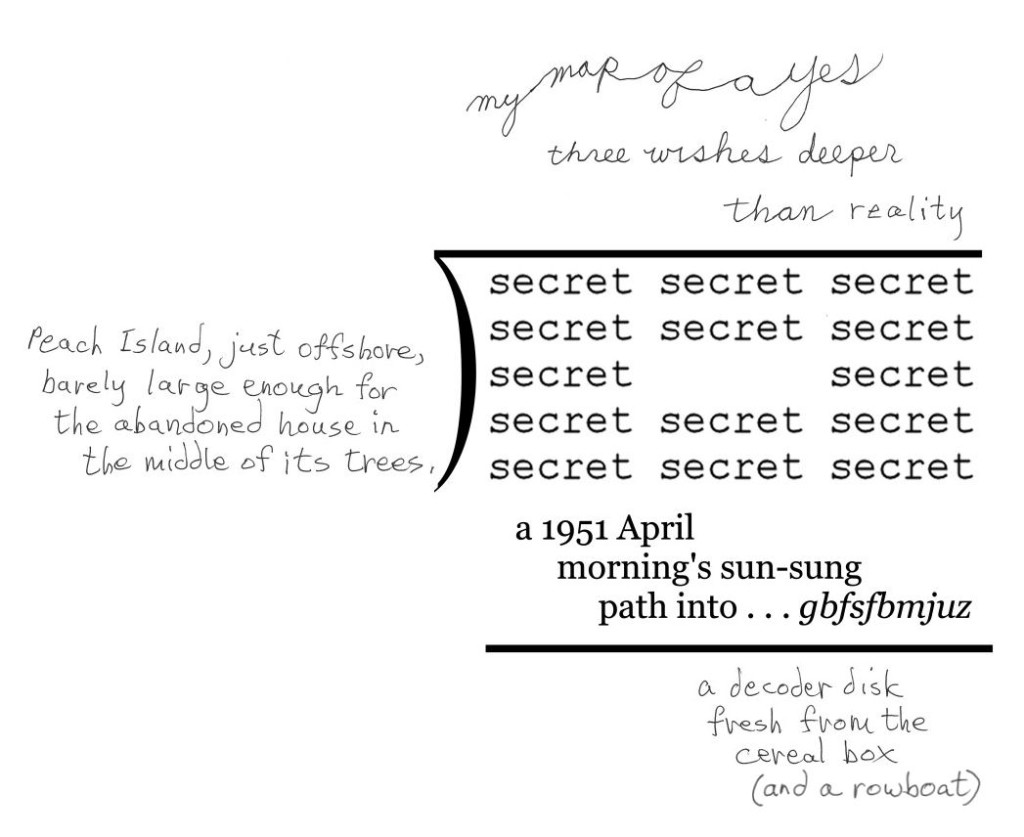


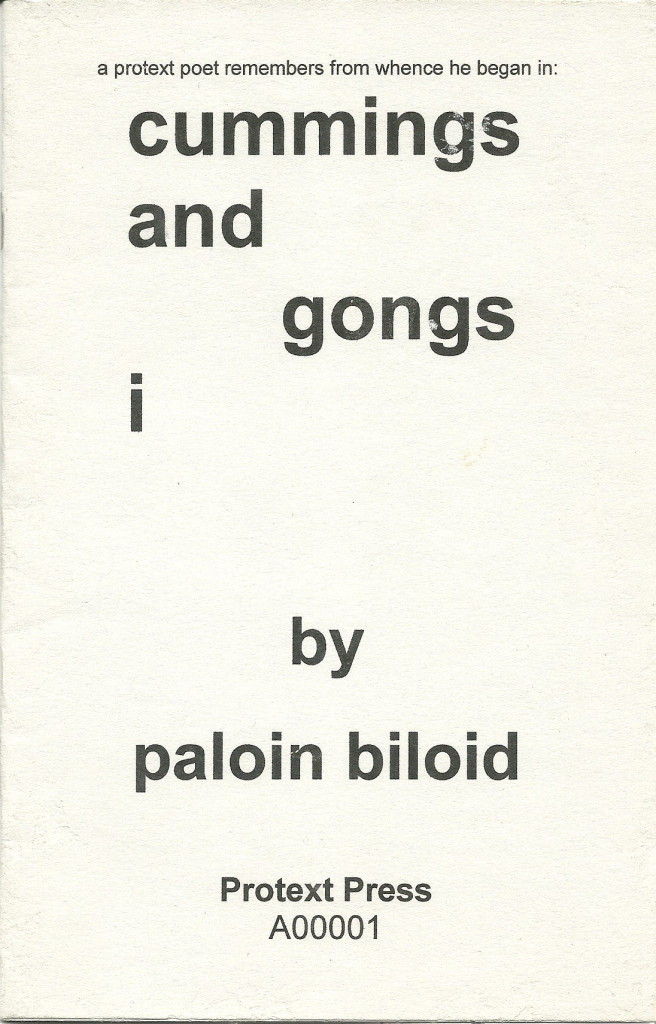
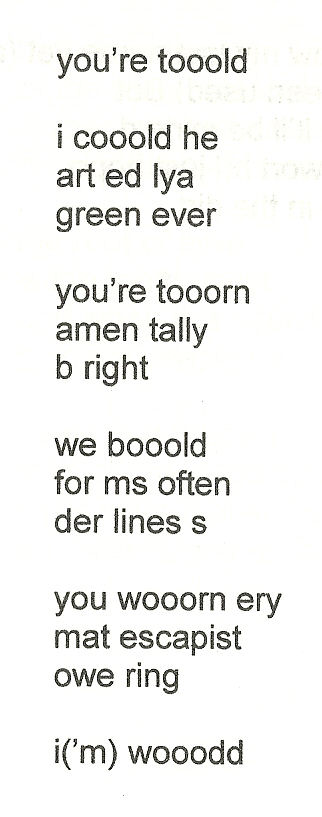

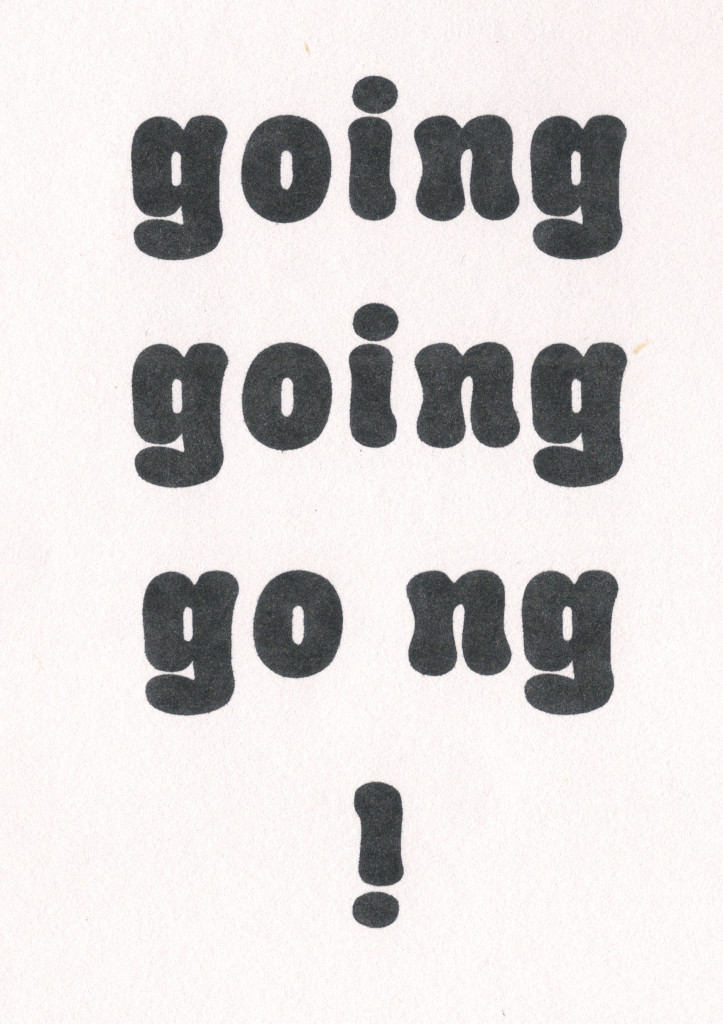
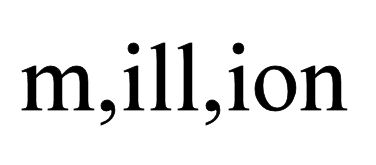
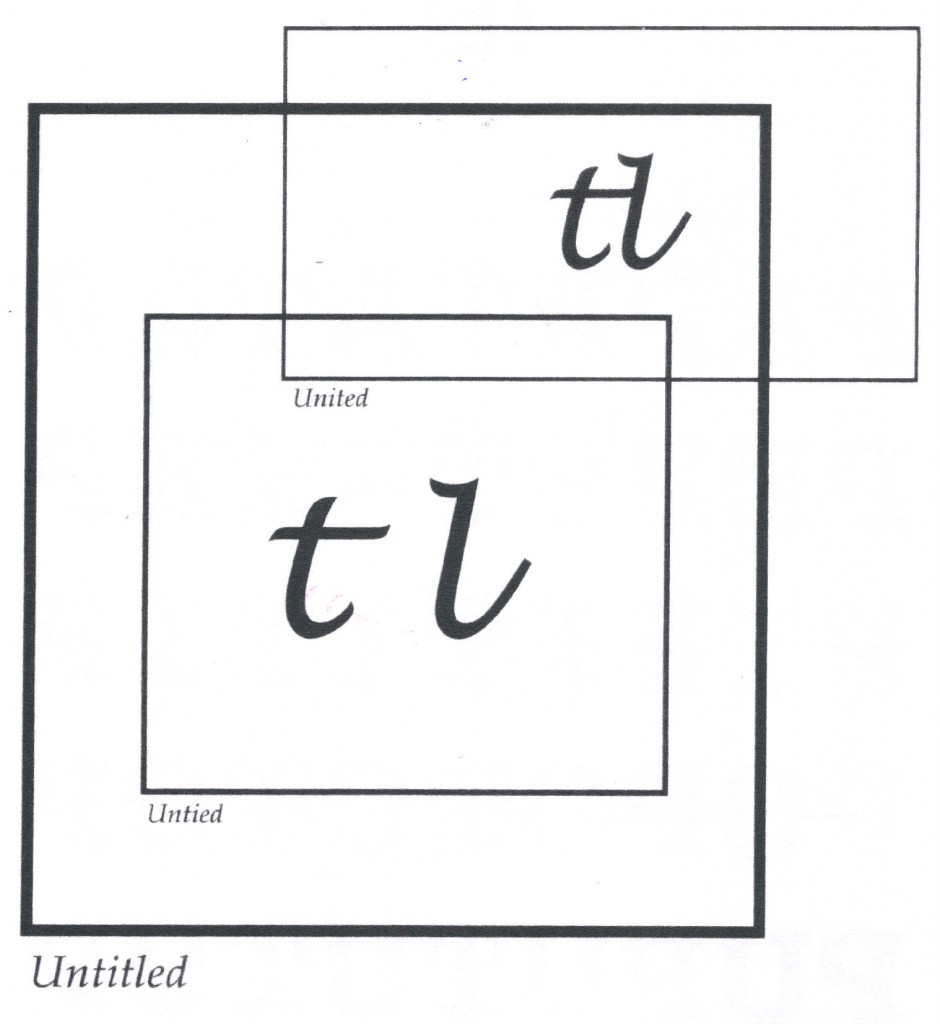

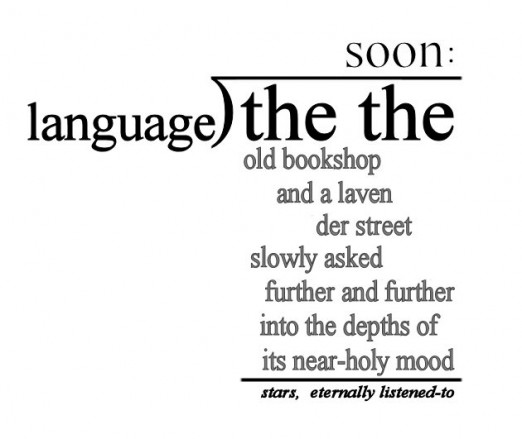
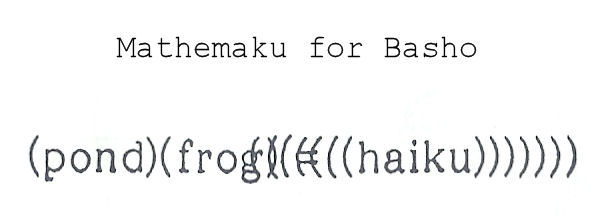
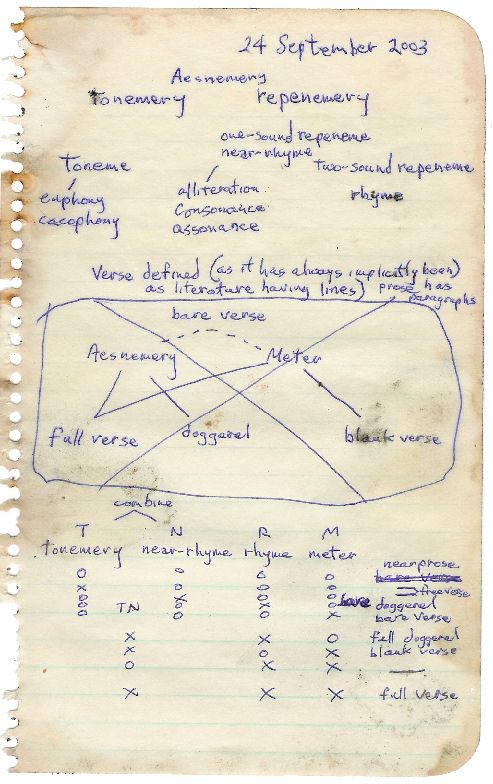
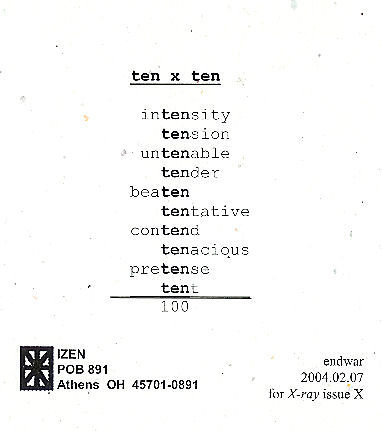 As I announced when I first posted this, I am hoping to publish an anthology of mathematical poems, like this one, so if you have one or know of one, send me a copy of it, or tell me about it.
As I announced when I first posted this, I am hoping to publish an anthology of mathematical poems, like this one, so if you have one or know of one, send me a copy of it, or tell me about it.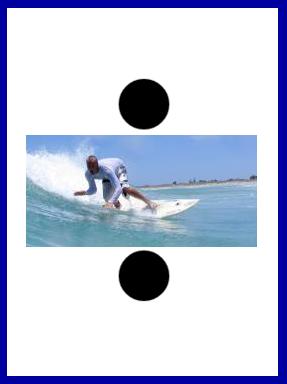



I really like this one; it strikes me as very E.E. Cummings-inspired, and I love that guy. I think the use of gray is a good idea because it gives the “remainder” more punch at the end. I’m a bit confused on reading your description in which you keep talking about Basho’s pond, which I don’t see in evidence here … I’m thinking if I had seen an earlier version of this, or I was better versed in the Grummanverse, I would understand that. And finally, you won’t have to struggle between “the” or “a” bookshop’s mood soon, where there’s just one bookshop left. Just had to end that with a little (sad) humor!
Oh, boy, I get to explain! Nothing I love more. Basho comes in because of his famousest poem, which I’ve made versions of and written about a lot, the one that has the “old pond” a frog splashes into. My poem has an “old bookshop” that has a mood with depths a street enters like (I think) the pond’s water with depths the frog enters. But now that you bring it up, I guess the allusion is pretty hermetic.
Glad you like it. I still do now that I’m looking at it again–although it strikes me as pretty weird.